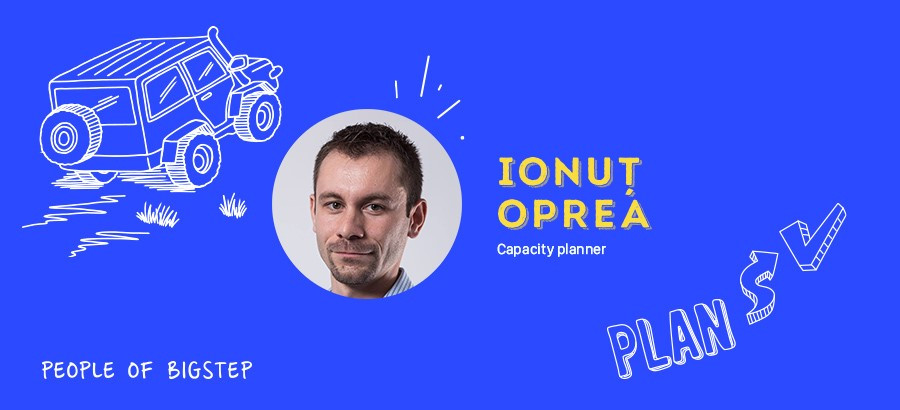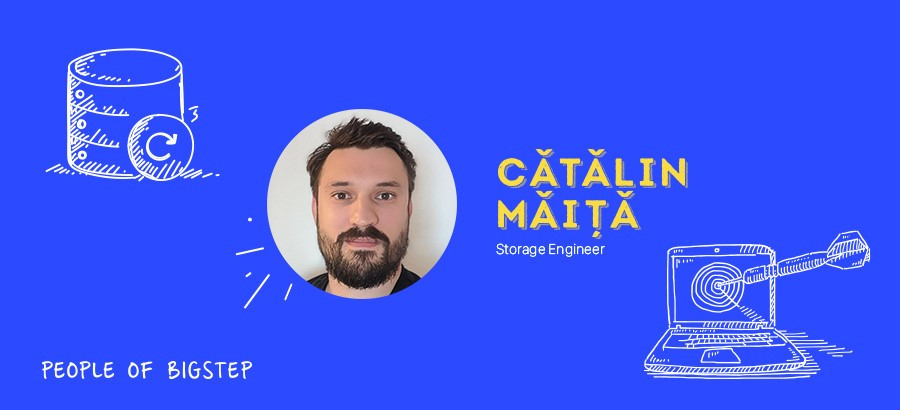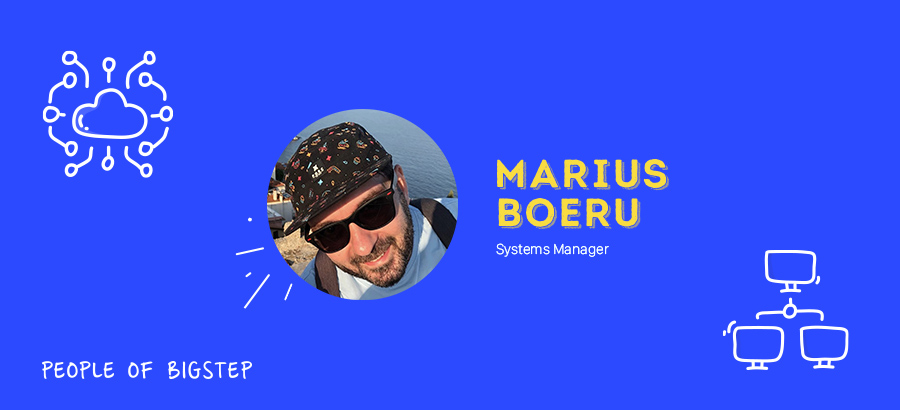- Advertising
- Bare Metal
- Bare Metal Cloud
- Benchmarks
- Big Data Benchmarks
- Big Data Experts Interviews
- Big Data Technologies
- Big Data Use Cases
- Big Data Week
- Cloud
- Data Lake as a Service
- Databases
- Dedicated Servers
- Disaster Recovery
- Features
- Fun
- GoTech World
- Hadoop
- Healthcare
- Industry Standards
- Insurance
- Linux
- News
- NoSQL
- Online Retail
- People of Bigstep
- Performance for Big Data Apps
- Press
- Press Corner
- Security
- Tech Trends
- Tutorial
- What is Big Data
[People of Bigstep] Ionut Oprea: “When I started working as capacity planner, it was a newly-developed position worldwide”
What is capacity planning? How will the semiconductor crisis affect businesses with on-premise infrastructure? How would Ionut describe our product to a non-tech person? And why off-road cars as hobby? Find out all these and more from out latest People of Bigstep interview with Ionut Oprea, Capacity Planner at Bigstep.

Hi Ionut, please tell us a few words about yourself.
I’m a 30+ year-old technical guy. I graduated a Math-Informatics high school class when Informatics was a totally new discipline and then I was in the second generation of a newly established faculty of Politehnica University of Bucharest. 4 years after graduating with a Master’s Degree, I started working on a newly established position in a start-up company. I still work here and I enjoy it.
What’s your position within the company and how does your work day look like?
Capacity planner. A work day starts at 08.00-09.00 am and usually ends after 8 hours. Given that I need to communicate with multiple departments and providers, it’s a very flexible schedule with downtimes during the working hours and/or intense activity outside the business hours.
What does capacity planning refer to exactly?
In brief, this implies to evaluate organization’s needs (in terms of technical resources – infrastructure and services) and develop long-term plans to meet business requirements.
How do you become a capacity planner?
I worked at Hostway for 4 years as Datacenter Engineer. Meanwhile, Bigstep was launched by the same investor as a start-up. When I started working as capacity planner at Bigstep, it was a newly-developed job position worldwide, so it was a win-win deal.
How is capacity generally calculated in IT?
It’s not like the production capacity. Actually, I don’t think it can be calculated, it just lets the business know how and when to scale, identify bottlenecks, mitigate risks, and improve products or services.
How much time do you generally spend in a data center?
It depends. I go on-site when a new set-up in needed, or a new PoP, in order to create a pattern that can be easily scaled by the NOC team and the other technical departments afterwards.
Do you remember and care to share a particular project that challenged you?
Yes, the Black Friday from 2012 (the second time this event was made in Romania). The expectations were very high, given that the first event was a windfall success and it was overloaded.
Talking about challenges, what can you tell us about the semiconductor crisis that is all over the news?
For the moment, the major players from this industry have stocks, but in the following weeks it is expected to have high prices and high delivery time for the same products/configurations.
How will this crisis affect businesses that keep their infrastructure on-premises?
They will need to reconsider their spare/buffer stocks in order to avoid any bottlenecks given that the delivery time for any equipment will be longer. Also, the purchase costs will be higher.
In a nutshell, they will need to procure more equipment and with higher costs that was initially planned, before the semiconductor crisis. An option for them would be to move some of their infrastructure to a provider like us, or to wait for the stocks to refill.
How would you describe our product to a non-tech, business person?
Imagine that when you need to use your day by day car for a more demanding task (like carry your new furniture, make a trip with your family and friends, or go off-road with it), you don’t need to change or tune your car, you can simply adjust her specs according to your needs (more space in the trunk, more seats, more power/speed, or high ground clearance), do your job, and then return to its standard features. Wouldn’t that be great? Well, with Bigstep you can do that at a glance with your infrastructure. And you can do that with dedicated physical servers, storage, and network, not with virtual resources.
How do you stay on top of new developments in IT and tech? Can you recommend some particular websites that you follow?
Usually I read the insight bulletins and newsletters of our partners. From there, I just google to find in-depth information. But, to be on-topic, techradar.com and tomshardware.com would be two sites that I recommend.
In your free time, we know you are fond of off-road cars. Tell us a bit about this passion.
Of cars, in general. The off-road passion came with the pandemic: I saved a Suzuki Samurai from scrapping, put it back on wheels in a couple of months so I could get into the woods, on mountain tops or in any isolated place with great view. Of course, preferable to be far away and the weather to be rainy. Also, I’m member of a non-profit 4X4 club and I voluntarily help people who get stuck with their cars.

You also hold cultural interviews at a library. What is that project about?
It’s a pro-bono activity for the community form my hometown. I’m trying to gather together cultural personalities in order to attract and keep the young generation connected to this area.
Which are the three things that you enjoy most about working at Bigstep?
- The team
- The flexible program
- The field of activity
What is your biggest work and/or hobby achievement?
I’m a technical guy, as I said, and I believe my biggest achievement is the fact that I’ve turned my passion into a job.
Readers also enjoyed:

[People of Bigstep] Catalin Maita – “Storage engineering is vital in the planning phases of a new project”


Leave a Reply
Your email address will not be published.